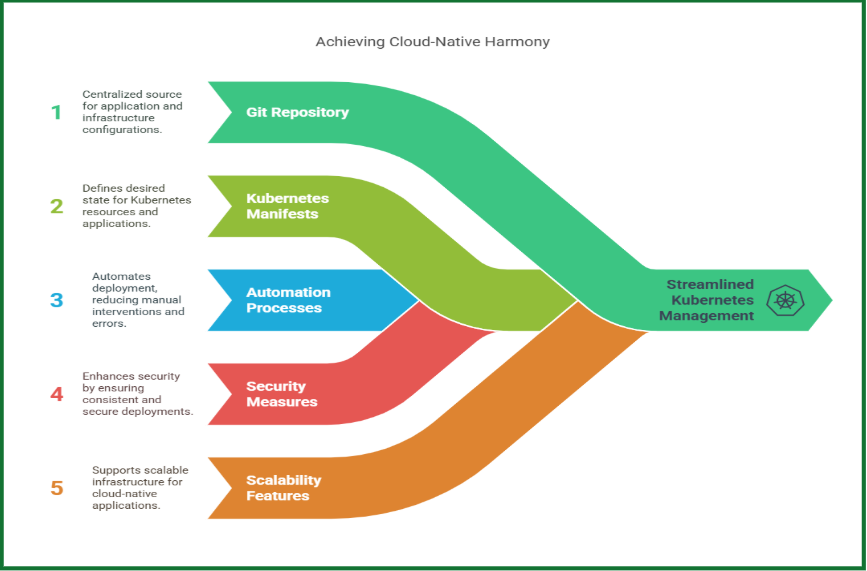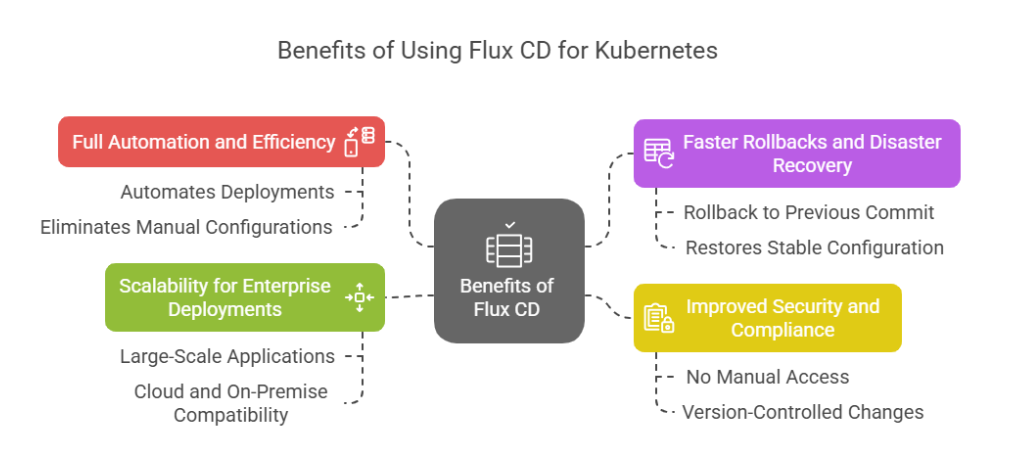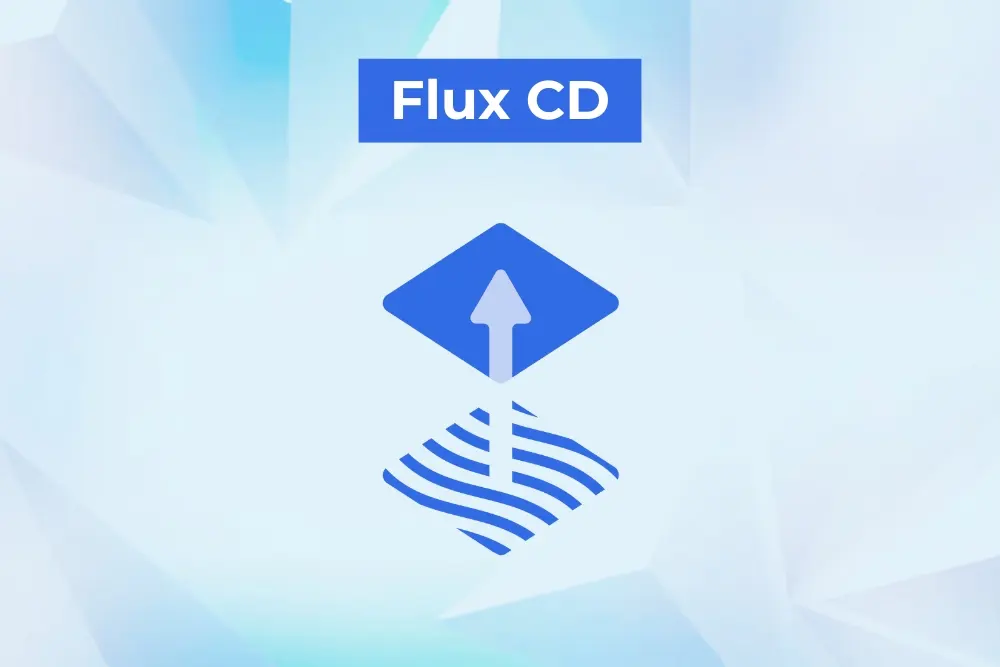Introduction to Flux CD
In the world of cloud-native applications, automation and efficiency are key to managing
infrastructure. Flux CD is an open-source GitOps tool that enables continuous deployment
(CD) for Kubernetes, ensuring that applications and infrastructure remain in sync with a
Git repository.
Flux CD monitors Git for changes in Kubernetes manifests and automatically applies them
to clusters, reducing manual interventions. Whether you're managing multi-cloud, hybrid
cloud, or microservices architectures, Flux CD simplifies deployment automation while
enhancing security and scalability.

How Flux CD Works
Flux CD follows GitOps principles to manage Kubernetes applications efficiently. Here’s
how it works:
1. Declarative Configuration in Git
-
All Kubernetes manifests (YAML files) are stored in a Git repository.
-
The Git repository becomes the single source of truth for deployments.
Key Features of Flux CD
Flux CD is a powerful GitOps tool with several key features that make it ideal for
Kubernetes deployment automation:
✅ GitOps-Based Continuous Delivery
- Ensures deployments are fully automated using Git as the control plane.
- Reduces the risk of human errors in managing Kubernetes applications.
✅ Multi-Tenant and Multi-Cluster Support
- Manages deployments across multiple Kubernetes clusters from a single Git
repository.
- Supports role-based access control (RBAC) for security.
✅ Automated Image Updates
- Detects new container image versions and updates Kubernetes manifests automatically.
- Ensures applications always run on the latest stable versions.
✅ Seamless CI/CD Integration
- Works with Jenkins, GitHub Actions, GitLab CI, and ArgoCD for full DevOps
automation.
- Supports webhook-based deployments and pull-based synchronization.
✅ Security and Compliance
- Git history acts as an audit log for compliance tracking.
- Supports secret management using Sealed Secrets and HashiCorp Vault.
Benefits of Using Flux CD
Why should DevOps teams choose Flux CD for Kubernetes deployment automation? Here are its
top benefits:
🚀 Full Automation and Efficiency
Flux CD automates deployments directly from Git, eliminating the need for manual
configuration changes.
🔄 Faster Rollbacks and Disaster Recovery
Rollback to a previous commit in Git, and Flux CD automatically restores the last stable
configuration.
🔒 Improved Security and Compliance
- No manual access to production environments is needed.
- All changes are version-controlled in Git, providing a clear audit trail.
📈 Scalability for Enterprise Kubernetes Deployments
- Ideal for managing large-scale, cloud-native applications with multiple
microservices.
- Works seamlessly with AWS, Azure, Google Cloud, and on-premise Kubernetes clusters.

Flux CD vs ArgoCD: Which One is Better?
Flux CD and ArgoCD are both popular GitOps tools, but they differ in several ways.
| Feature |
Flux CD |
ArgoCD
|
|
| Deployment Model |
Pull-based |
Push-based |
|
| Multi-Tenant Support |
Yes |
Yes |
|
| Automated Image Updates |
Yes |
No |
|
| UI Dashboard |
No |
Yes |
|
| Use Case |
Kubernetes-native CI/CD |
Application-focused GitOps |
|
Best Practices for Implementing Flux CD
To get the most out of Flux CD, follow these best practices:
1. Structure Your Git Repository Properly
- Maintain separate branches for development, staging, and production environments.
- Use Git pull requests for controlled changes and approvals.
2. Enable Automated Image Updates with Flux CD
- Configure image automation policies to automatically deploy the latest stable
container versions.
3. Use RBAC and Secret Management
- Implement role-based access control (RBAC) to restrict unauthorized changes.
- Store secrets securely using Sealed Secrets or HashiCorp Vault.
4. Monitor Deployments with Observability Tools
- Use Prometheus and Grafana to track performance metrics and alert on failures.
- Enable logging and monitoring to detect drift between the live state and Git
repository.
Conclusion
Flux CD is a powerful GitOps-based continuous deployment tool designed for
Kubernetes environments. By leveraging Git as a single source of truth, it
enables automation, security, and scalability for DevOps teams.
If you're looking for a robust solution to automate Kubernetes application
deployments, Flux CD is an excellent choice. Start integrating Flux CD
today and take your Kubernetes DevOps strategy to the next level!
Want to implement Flux CD for seamless Kubernetes automation? Contact us today to optimize
your DevOps workflow!




